Making Electric Waves in the Egyptian Desert
by Yang Shun
[Egypt] Adel M.Abdelaziz
Giza Province in central Egypt used to reel under power outages in the past. "We didn't expect such dire electricity shortage when we first opened our restaurant here," Wan, the manager of a Chinese restaurant, said. "There would be circuit breaks, particularly in peak summer, when electric appliances like the air conditioner, fridge, kitchen exhaust fan and oven were all working together."
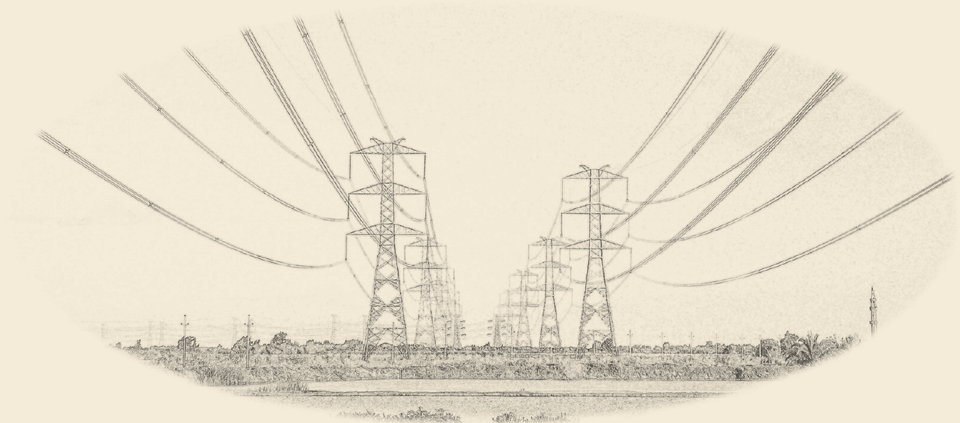
Though Egypt's GDP and gross power generation is the highest in North Africa, the power infrastructure was underdeveloped and couldn't provide stable electricity supply for production and daily life functions. It was a major problem for the people and a major obstacle in attracting foreign investment.
When Egyptian President Abdel Fattah al-Sisi visited China in 2014, he said he hoped Egypt would become an investment destination for more Chinese enterprises since its energy and infrastructure sectors had broad prospects. Electricity and Renewable Energy Minister Mohamed Shaker said Egypt needed to expand the scale of its power plants and improve its power supply and transmission network capacity to solve its energy problems. The history of Egypt's electricity shortage finally changed in 2016 with the launch of the EETC 500 kV transmission line project to upgrade the power grid.
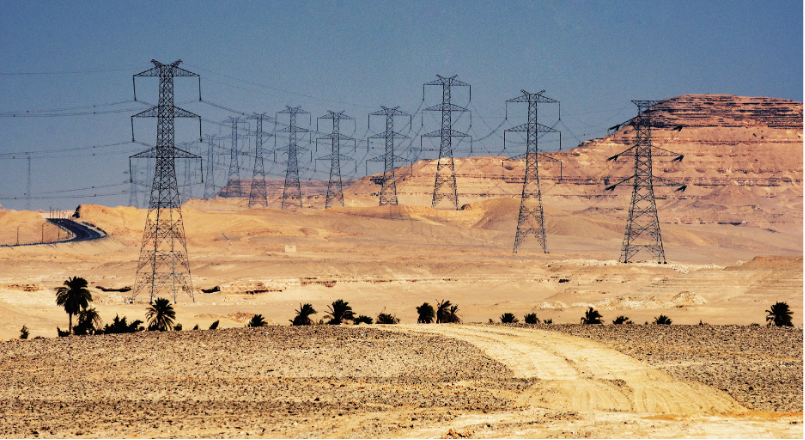
The new towering pylons in the Egyptian desert
Four years later, towering pylons have become part of the vast desert landscape. "With the completion of these pylons, the power problem has been solved," a Giza resident said. "Now we no longer have power going off while cooking, disrupting our daily life."
"The power supply is stable today and doesn't fail even when all the electric appliances are on at the same time. My business is improving too," Wan, the restaurant manager, said.
Pylons on the Banks of the Nile
Initially, when the transmission line project started, Yahiya, the manager of the project, had some concerns. "We were worried about the capability and efficiency of the Chinese companies undertaking the project," he said. "But our misgivings ended when construction started. They were very capable and the project quality is commendable."
Many Egyptians had similar concerns before the project started, which was not surprising, considering that this is the largest power transmission project in Egypt's history till now. It entailed erecting double-circuit 500 kV steel pole transmission lines for 1,210 kilometers, including 15 truck lines in the Nile delta and its southern part.
But once the State Grid Corporation of China, the project contractor, began work, it won the trust of its local peers. Chinese and Egyptians worked together on the project from the initial design through the construction period, cooperating and learning from each other.
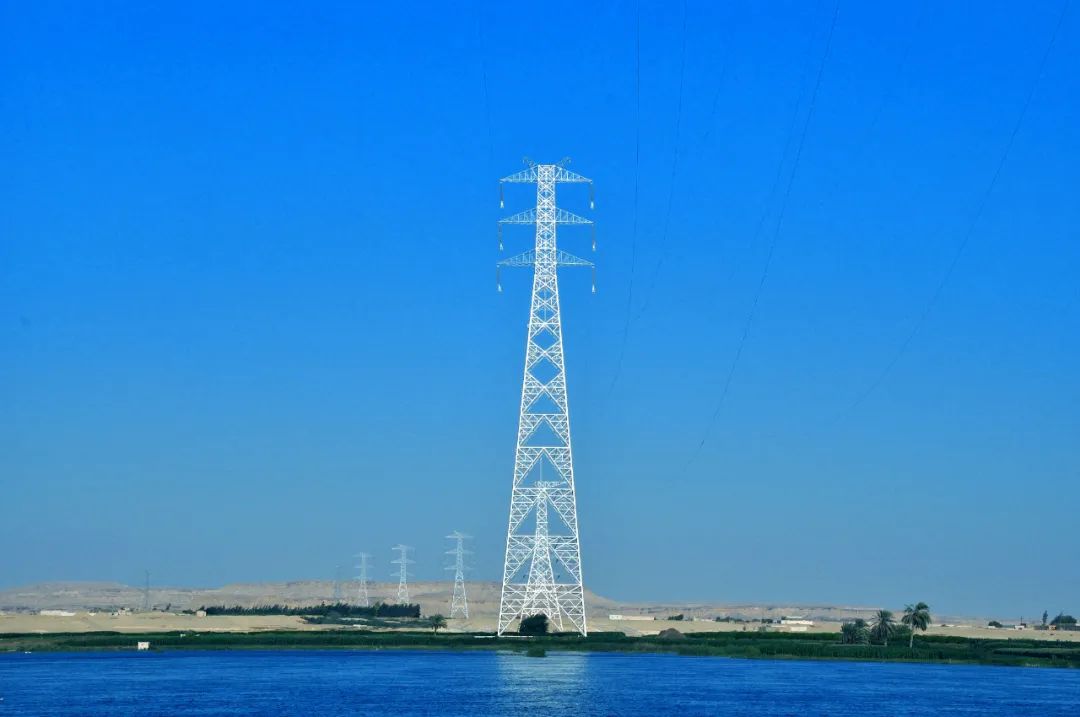
Power transmission pylons over the bank of the Nile
The construction of the No. 8 transmission line, one of the most challenging sections, is a telling example of their collaboration.
In this section, two pylons had to be built across the Nile, spanning a distance of over 600 meters. The pylons would be 174.8 meters high, which was more than 30 meters higher than the Pyramid of Khufu, also known as the Great Pyramid of Gaza, the pride of Egypt.
Faced with a tight schedule and difficult construction, the project team held meetings to discuss the work with the local staff and come up with a detailed construction plan. They decided to assemble and erect the pylons using seating-type double-rocker holding poles. Subsequently, it took only a month to erect the cross-river pylons.
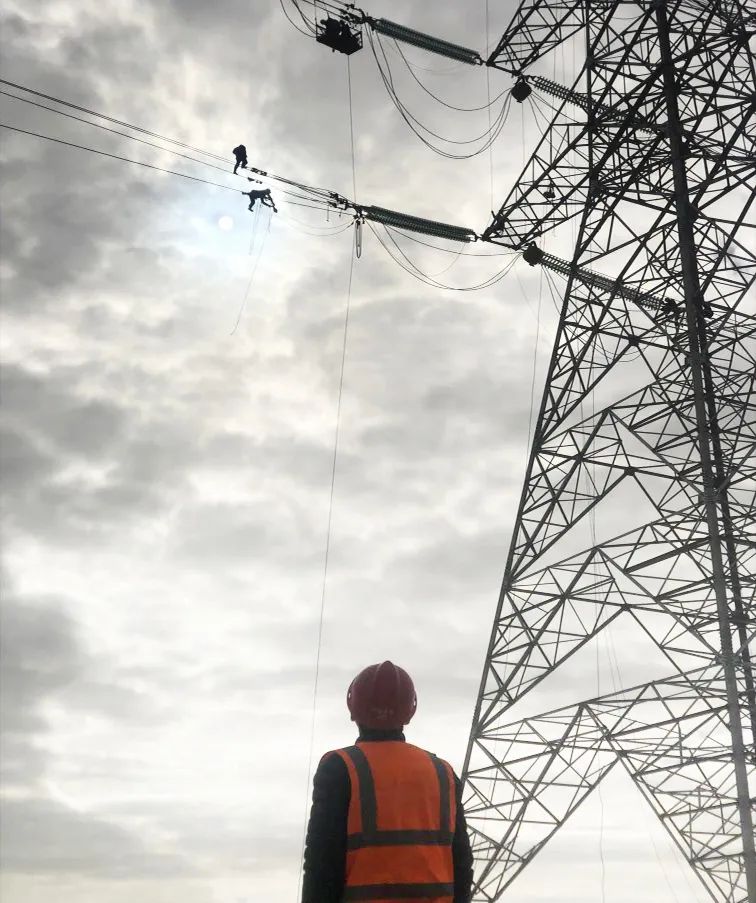
A worker checks a pylon line.
Today, the twin towers have become a new landmark on the Nile.
The project demonstrated the strength and perseverance of the Chinese company. Over three years, its workers overcame the challenges posed by the local topography and climate, beginning each laborious day before dawn and wrapping up the work by dusk. One important development was that the project trained many of the local managers and constructors, who already had experience in their area of work. The local power transmission company involved in the project sent its best engineers to China for training to improve its power transmission capacity and cultivate talents in the sector.
The joint efforts have brought in remarkable changes. From power shortage, Egypt's power grid structure has seen significant improvement in its power transmission capacity and security. The project construction, dominated by Chinese expertise in the beginning, changed to joint cooperation with Egypt to finally full operation by Egypt.
Shaker said about the project, "In addition to a project, the Chinese enterprises left us construction experience and tech-savvy locals."
A Donkey Cart Friendship
The rainy season was a big headache for the project builders. Alexandria, though a major economic center, lacked a proper drainage system and the frequent rains turned the ground swampy, causing a lot of problems for construction.
Unfortunately, it was the rainy season when they started assembling the formwork to begin construction. The muddy earthen road at the construction site entrance was a deterrent for vehicles. The builders were told that by the most optimistic estimate, it would take at least four to five days to resume transport after the road dried. To stay on schedule, the builders decided to carry the materials themselves.
When the villagers saw them going back and forth on the swampy road carrying the heavy building materials on their shoulders, though they couldn't understand what drove the men, nevertheless, they reached out to help.
It began with Naggar.
One day, after Naggar had finished the odd job and was hanging around, he saw the Chinese construction workers in their blue uniform and orange vest going by his home again and again. Their clothes were soaked with sweat. He decided to offer to help them.
His family, too poor to own a car, had a donkey cart. Naggar and his brother went to the construction site in their cart. The project team was pleasantly surprised when the brothers volunteered to help. The donkey cart was much more efficient than manual labor.
Naggar instructed his brother to put the heavy and irregularly-shaped building materials onto the cart. When it was loaded, his brother yoked the donkey and Naggar began pushing the cart from the back. The bad road made the cart heave all the way. Naggar had a tough job preventing it from rolling over while his brother cajoled the donkey to move ahead.
They were soon joined by other villagers and the muddy road bustled with noise and the energy of the men. After a few trips, everyone's shoes were covered with mud, but nobody complained, joking with each other about whose shoes were the cleanest, and sharing their experience and knowledge of routes.
In this congenial atmosphere, the building materials were unloaded ahead of schedule with the coordinated efforts of everyone.
The donkey cart transportation and villagers' assistance during the rainy season is an unforgettable memory for the project team. Years later, it remains fresh in their mind as an epitome of solidarity and dedication of the people of both countries in the three years of construction. Naggar has a stable job today and his living standard has improved significantly together with the growing economy.
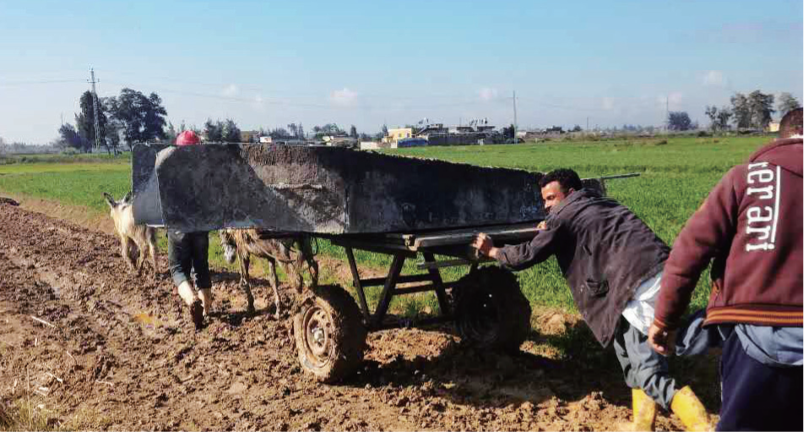
Naggar pushes the family donkey cart carrying building materials.
From Apprentices to Habibis
Habibi means a good friend in Arabic. The three years of construction witnessed many Chinese and Egyptian colleagues becoming habibis.
Khenti, a young Egyptian on the transmission line project, joined the construction team after graduation from college. At the beginning he was entrusted with only purchasing food and office supplies. Later, he was asked to do independent survey and construction coor- dination. He shared the vicissitudes of the work with his Chinese colleagues uncomplainingly. He would always say, "I have grown a lot working with my Chinese colleagues."
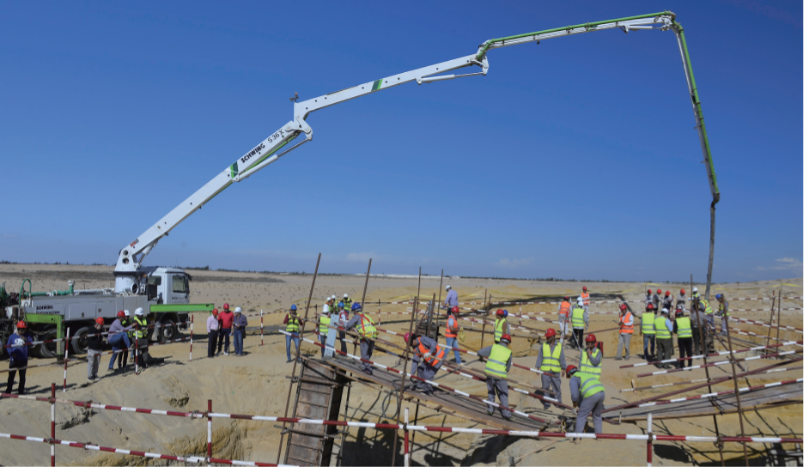
At the construction site
When Adjo, another Egyptian worker, first arrived at the construction site, he was hired for non-skilled labor due to his strong build. But his Chinese colleagues patiently showed the newcomer how to do skilled work, including plastering, steel bar binding, form-work and concrete vibrating in spite of the language barrier. After repeatedly consulting them and keeping on at the work, Adjo became a skilled and experienced builder and was promoted to team leader.
When some of his local colleagues grew envious of his competence and salary, he told them, "This is because I learned from my Chinese mentors. If you ask them to help you, they will help you too to become skilled workers and you too can earn a high salary."
Morehabibis on the project team like Khenti and Adjo have contributed their part to the early completion of the project. In the process they have improved their life and interpreted the essence of the China-Egypt friendship.
From Ramadan to Spring Festival
One night in 2016, when Ramadan was being celebrated, the desert looked magical with the radiant moon shining bright in the sky, its beams turning the night as bright as day. You could see the camel grass on the rolling sand dunes. The cranes at the brightly-lit construction sites looked like surreal giants carrying a huge torch, searching for something in the desert.
During the Ramadan holiday, devout Muslims abstain from taking any food or water after sunrise, breaking their fast only after sunset. To respect the local custom, balance work with rest, and ensure the project remained on schedule, Li Zhiyuan, the team leader, modified the day shift from 3 or 4 a.m. to sunrise and the night shift from 7 or 8 p.m. to midnight. After work, the men enjoyed a hearty meal together and the splendor of the desert at night. During the magical nights, Li heard many stories about Muslim customs and the nomadic Bedouin tribe from the Egyptian engineers.
He still remembers vividly those desert nights. The hearts of two countries with two ancient civilizations were never so close together like at that moment in that well-lit construction site under the starry sky.
The Spring Festival is as important to the Chinese as Ramadan is to Egyptians.
Every year, the project department decorated their dormitory on the eve of Spring Festival, inviting their Egyptian colleagues to celebrate the festival with their Chinese peers and better understand the Chinese culture.
When the introverted Sahara was put on the team, he found it hard to fit in. To bridge the distance and help Sahara fit in, each Spring Festival, the Chinese employees invited him and other Egyptian colleagues to paste colored papers with typical traditional New Year couplets written on them and traditional pictures together. Sahara gradually realized that his colleagues were warm and caring, and always ready to help when he needed help. He then became more confident and optimistic about his work and in his relationship with them.
Eventually, he became a facilitator for them. When the project needed to acquire land for the construction, he showed up to communicate with the villagers, explaining to them that the objective was to develop the local economy and improve their lives. He also wrote the simple Arabic text for the flyers explaining all this and distributed them among the villagers at the construction site.
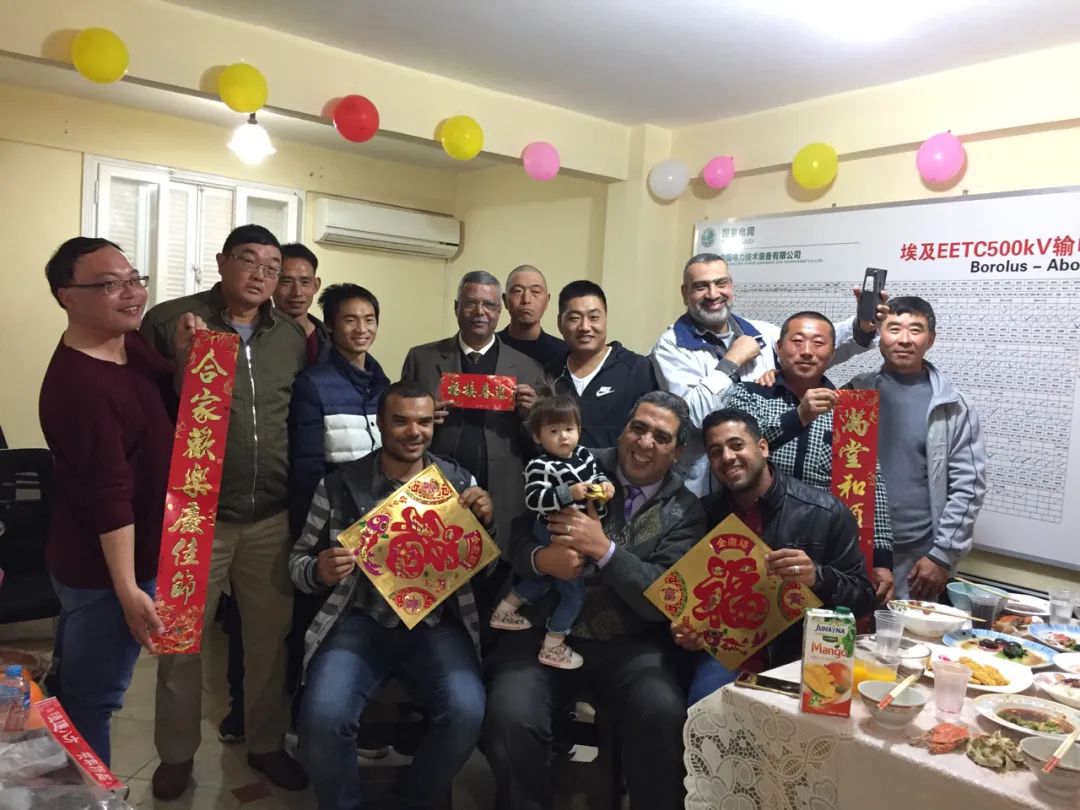
Celebrating Spring Festival together
This is the power of culture. Projects are never about engineering alone; they are about mutual learning and integration of different civilizations, which sparks new ideas and wisdom in the process.
Today the Nile surges ahead with rows of electricity pylons rising majestically on its banks and power cables extending above the oasis. The EETC (Egyptian Electricity Transmission Company) and Chinese enterprises share similar development goals, missions and interests. The stories of their shared development have become part of the annals of China-Egypt friendly cooperation.
FOR MORE
Project Overview:
The EETC 500 kV transmission network upgrade and innovation project is the largest power transmission project in Egypt till now. The project contract was signed by Egypt's Ministry of Electricity and Renewable Energy and the State Grid Corporation of China (SGC). China Electric Power Equipment and Technology Co. Ltd., a subsidiary of SGC, was the engineering, procurement and construction contractor of the project, responsible for its survey and design, equipment supply and construction. The project markedly improved the electricity output capacity of the gas-powered stations of the Nile delta, enhanced the security of the state grid and harnessed locally produced electricity.
It has brought significant economic benefits, boosting the development of upstream and downstream industries such as power supply, electrical equipment and raw materials, not only in Egypt but across the entire Middle East. The project also created about 7,000 jobs in Egypt, achieving mutual benefit, common progress and win-win cooperation for both China and Egypt.


